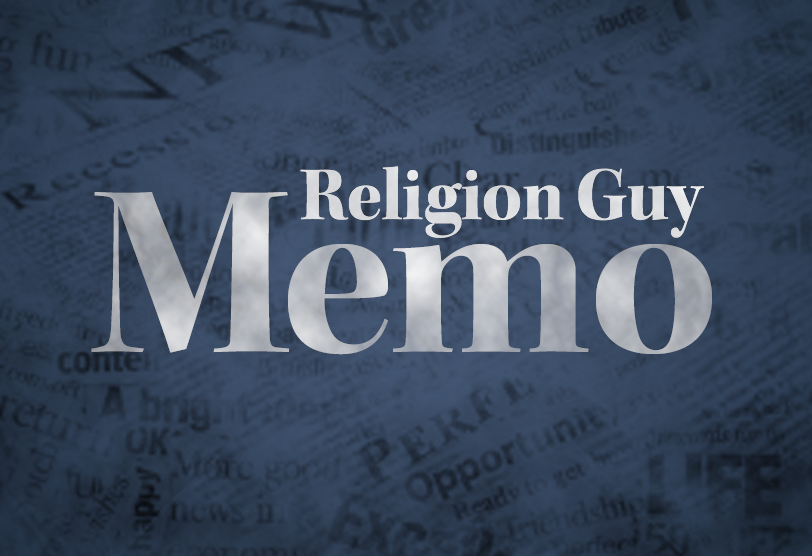We live in an ethical epoch when editors at BuzzFeed and Politico have no scruples when a reporter sleeps with a prime source on her beat, after which she lands a prized New York Times job, at the very top of the journalism food chain.
Not that flexible conflict-of-interest standards are anything new. Ben Bradlee, as lauded as any journalist of his era, exploited a close friendship with President John F. Kennedy when he was Newsweek’s Washington bureau chief, giving fits to his competitors at Time. Bradlee was covering events that, one could argue, that he had helped shape in his conversations with Kennedy.
In 2018, such stuff matters more than ever, given the low esteem of “mainstream media” performance. The latest evidence comes in a survey reported June 11 by the American Press Institute, The Associated Press and NORC at the University of Chicago.
We learn that 35 percent of Americans have a negative view of news organizations, and 42 percent think news coverage veers too far into commentary, while 63 percent want to get mostly facts alongside limited analysis. Importantly, 42 percent don’t understand how the use of anonymous sources works and 68 percent say the media should offer more information about story sources.
President Donald Trump’s frequently fake “fake news” attacks on reporters, of course, continually involve complaints about unnamed sources. For sure, the Washington press corps, which makes such lavish use of anonymous sources in coverage critical of the Trump administration, must do everything possible to maintain accuracy and fairness.
Once upon a time -- in 2005 -- the staff Credibility Group formed in the wake of the horrid Jayson Blair scandal advised New York Times colleagues in a report titled “Preserving Our Readers’ Trust [.pdf here].” It warned that the daily should “keep unidentified attribution to a minimum” and “energetically” enforce limits across the board -- in hard news, features, magazine sections, and with copy from the growing number of freelance contributors.
Current Times trust-building includes explanations of the news business in the “Inside the Times” column on page 2, a great idea other outlets should emulate. In the June 18 item, standards editor Philip B. Corbett depicted current policy on anonymous sources. The same material was posted minus a pay wall.
In summary, Corbett said unnamed sources are used only for “newsworthy” and “credible” information that cannot be reported “any other way.” He understands that readers “are skeptical about the credibility and motivation of unnamed sources” and some even suppose they’re simply made up. (The latter vicious claim, a Trumpian favorite, is preposterous but reflects the damage Jayson Blair wrought.)
Times policy requires that the reporter identify the secret source to an editor and that such use be approved by a “high-ranking editor.” A third OK is needed when such sourcing is “central to the story.”
We’re told this tactic is sometimes necessary for “important stories” in sensitive areas like national security or business because key sources “often fear for the jobs or business relationships -- sometimes even for their safety.” Often, officials “will be candid only if they know their name won’t be used.” But reporters and editors must weigh the motives and track records of leakers and seek to corroborate their information elsewhere.
All good points. The Religion Guy utters loud amens in particular because he spent more than two decades writing about Catholicism and especially the Vatican at Time. The newsmagazines of that era had field correspondents file detailed material that we New York writers would boil down. Though newspaper and wire folks found that odd, it was a content-rich, flexible, and reader-friendly system.
It was no credit to The Guy or his headquarters predecessors that our superb Rome Bureau led by clever stalwarts like Wilton Wynn, Jordan Bonfante, and John Moody regularly produced historic scoops such as (1) the first news on the contents of Pope Paul’s birth-control encyclical, (2) Poland’s Cardinal Wojtyla as a prospect for papal election, (3) the best account of how the secret conclave votes proceeded to elect Wojtyla.
While newspapers (pre-Internet) provided the famous five W’s (who, what, when, where, why) the newsmagazines would follow up with a second “what” as in “what’s really going on here”? That depended on information provided without attribution by keenly informed church insiders who absolutely could not be named and in many cases took solemn oaths before God to maintain secrets. With their help, we were able to provide Catholics and other readers authoritative and important information.
Yes, blabbers and leakers and gossipers are a risky resource that requires careful assessment, but an invaluable one.


